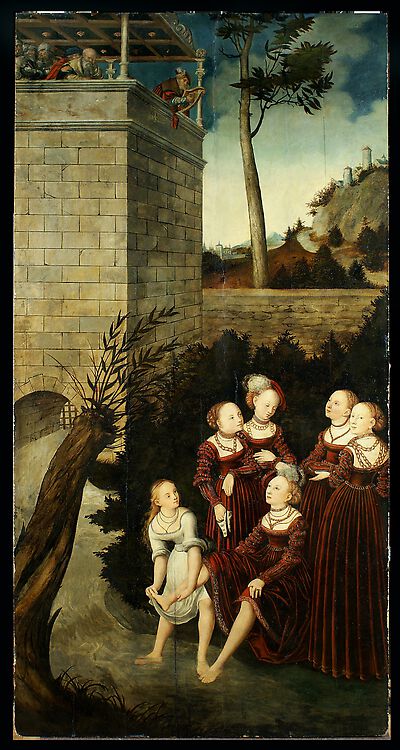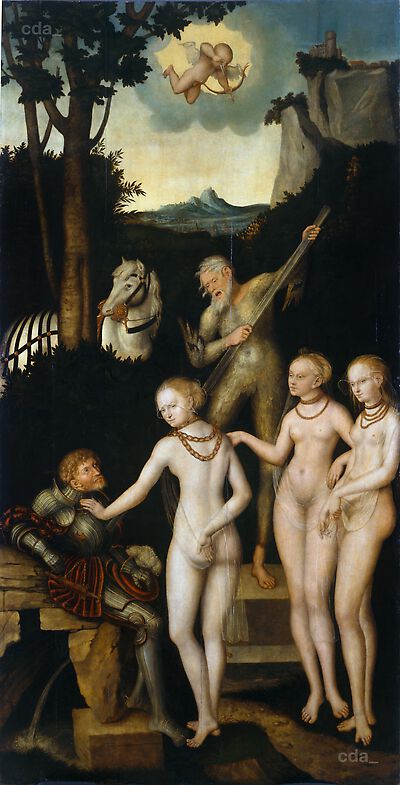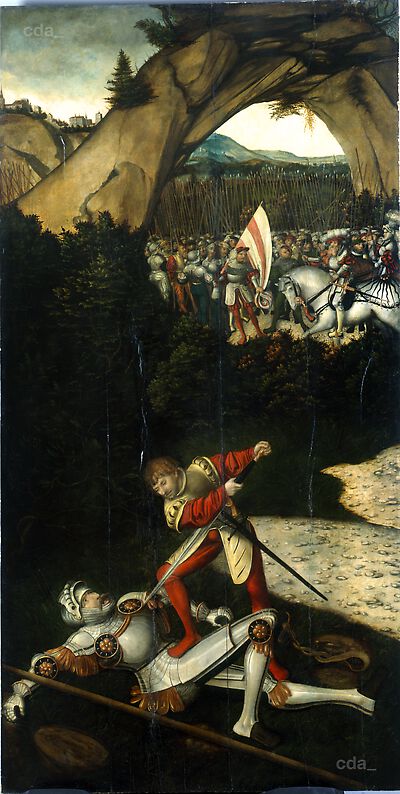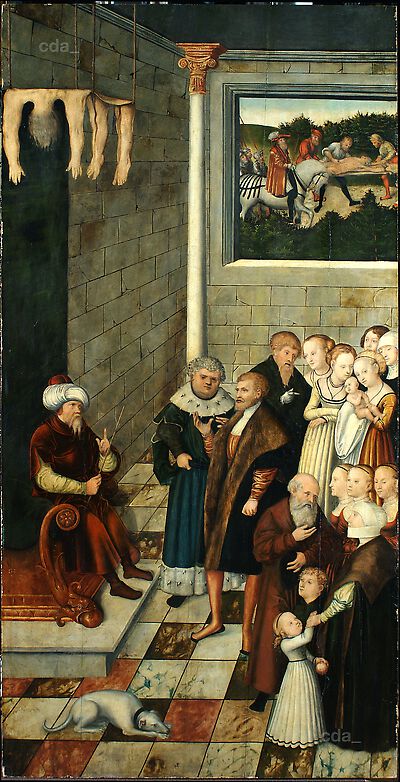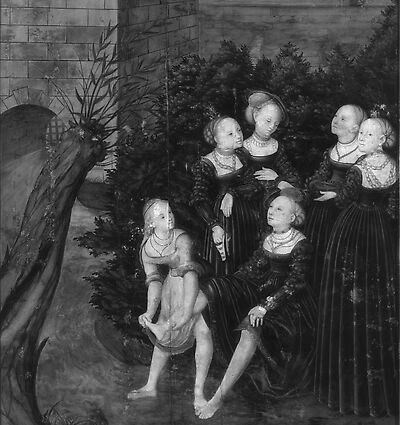| Frank 2018 |
181 fn. 258 |
|
|
| Author | Katharina Frank |
|---|
| Title | Die biblischen Historiengemälde der Cranach-Werkstatt. Christus und die Ehebrecherin als lehrreiche 'Historie' im Zeitalter der Reformation |
|---|
| Place of Publication | Heidelberg |
|---|
| Year of Publication | 2018 |
|---|
|
| Wohlberedt 2015 |
194, 203 |
|
|
| Author | Astrid Wohlberedt |
|---|
| Title | Die Gerechtigkeit des Kaisers Trajan aus der Cranach-Werkstatt, ehemals im Gotischen Haus in Wörlitz |
|---|
| Publication | in Kulturstiftung Dessau-Wörlitz, ed., Cranach im Gotischen Haus in Wörlitz, Exhib. Cat. Wörlitz |
|---|
| Place of Publication | Munich |
|---|
| Year of Publication | 2015 |
|---|
| Pages | 194-203 |
|---|
|
| Exhib. Cat. Berlin 2009 A |
201-202 |
III.20 |
Fig. III.20 |
| Editor | Stiftung Preussische Schlösser und Gärten Berlin-Brandenburg |
|---|
| Title | Cranach und die Kunst der Renaissance unter den Hohenzollern. Kirche, Hof und Stadtkultur |
|---|
| Place of Publication | Berlin |
|---|
| Year of Publication | 2009 |
|---|
|
| Most, Wolf et al. 2009 |
88-89 |
|
|
| Author | Mechthild Most, Anja Wolf, Jens Bartoll, Peter Klein, Undine Köhler, Eva Wenders de Calisse |
|---|
| Title | Zur Maltechnik der beiden Cranach und ihrer Werkstatt. Ergebnisse der technologischen Untersuchung der Bildtafeln der Stiftung Preußische Schlösser und Gärten |
|---|
| Publication | in Stiftung Preußische Schlösser und Gärten Berlin-Brandenburg, Evangelische Kirchengemeinde St. Petri-St. Marien, eds., Cranach und die Kunst der Renaissance unter den Hohenzollern, Exhib. Cat. Berlin |
|---|
| Place of Publication | Berlin |
|---|
| Year of Publication | 2009 |
|---|
| Pages | 86-97 |
|---|
|
| Erichsen 1997 |
|
|
|
| Author | Johannes Erichsen |
|---|
| Title | Zwei Schweriner Dokumente zu Lucas Cranach |
|---|
| Journal | Kunstchronik |
|---|
| Issue | 50/2 |
|---|
| Year of Publication | 1997 |
|---|
| Pages | 49-53 |
|---|
|
| Michaelis 1989 |
25 |
|
|
| Author | Rainer Michaelis |
|---|
| Title | Deutsche Gemälde 14.-18. Jahrhundert. Staatliche Museen zu Berlin |
|---|
| Place of Publication | Berlin |
|---|
| Year of Publication | 1989 |
|---|
|
| Moos 1988 |
|
|
|
| Author | Peter von Moos |
|---|
| Title | Geschichte als Topik. Das rhetorische Exemplum von der Antike zur Neuzeit und die historiae im "Policraticus" Johanns von Salisbury |
|---|
| Place of Publication | Hildesheim, New York |
|---|
| Year of Publication | 1988 |
|---|
|
| Friedländer, Rosenberg 1979 |
141 |
No. 357F |
|
| Author | Max J. Friedländer, Jakob Rosenberg |
|---|
| Editor | G. Schwartz |
|---|
| Title | Die Gemälde von Lucas Cranach |
|---|
| Place of Publication | Basel, Boston, Stuttgart |
|---|
| Year of Publication | 1979 |
|---|
|
| Exhib. Cat. Basel 1974/1976 |
562-565, 577-578 |
|
|
|
|
| Schade 1974 |
439 |
No. 324 |
|
|
|
| Exhib. Cat. Berlin 1937 |
41 |
113 |
|
| Editor | Staatliche Museen, Berlin |
|---|
| Title | Lucas Cranach d. Ä. und Lucas Cranach d. J. Gemälde, Zeichnungen, Graphik |
|---|
| Place of Publication | Berlin |
|---|
| Year of Publication | 1937 |
|---|
|
| Friedländer, Rosenberg 1932 |
|
288f |
|
|
|
| Friedländer 1906/1907 |
67-70 |
|
|
| Author | Max J. Friedländer |
|---|
| Title | Altdeutsche und altniederländische Schulen |
|---|
| Publication | in Paul Seidel, ed., Gemälde alter Meister im Besitze Seiner Majestät des deutschen Kaisers und Königs von Preussen |
|---|
| Place of Publication | Berlin, Leipzig, Vienna, Stuttgart |
|---|
| Year of Publication | 1906 |
|---|
| Pages | 45-77 |
|---|
|
| Rumpf 1794 |
131 |
|
|
| Author | Johan Daniel Friedrich Rumpf |
|---|
| Title | Neuester Wegweiser durch die Königl. Preußischen Staaten. Ein Handbuch für fremde und Einheimische. Beschreibung der aeussern und innern Merkwürdigkeiten der Königlichen Schlösser in Berlin, Charlottenburg und bey Potsdam |
|---|
| Place of Publication | Berlin |
|---|
| Year of Publication | 1794 |
|---|
|
